7 Michelangelo’s Famous Paintings and Where to See Them
Michelangelo might be famous for his incredible sculptures, but his paintings are just as impressive in terms of cultural and artistic impact.
His work goes beyond beautiful images. He captures raw human emotion, perfect anatomy, and dramatic storytelling in a way that few others have matched.
Whether it’s a biblical scene or a mythological story, his paintings are true masterpieces of the Renaissance.
In this post, we’ll take a closer look at some of Michelangelo’s most famous paintings, including the jaw-dropping ceiling of the Sistine Chapel and a few lesser-known works that still show off his genius.
If you’re a fan of art, culture, or history, Michelangelo’s paintings are definitely worth exploring!
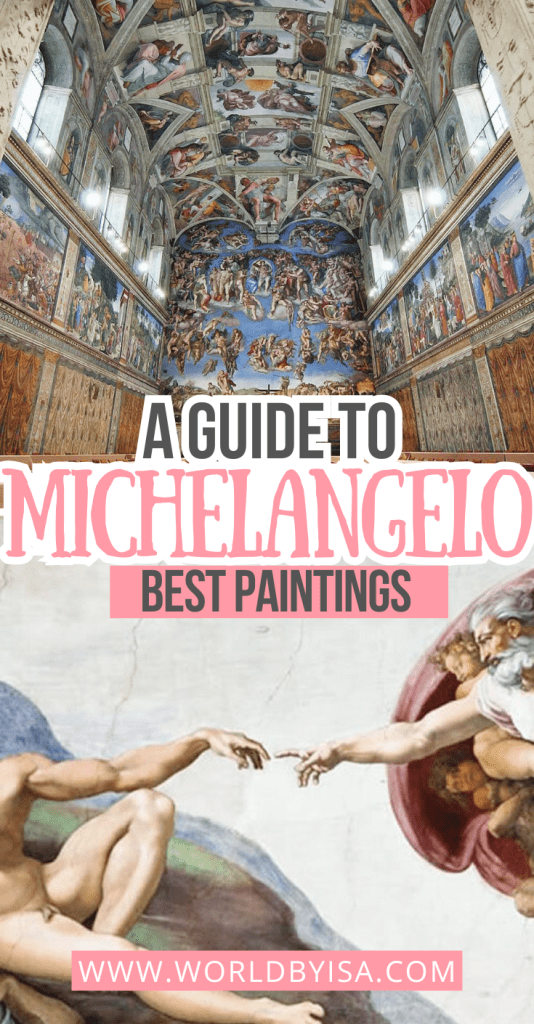
Disclosure: This post does contain affiliate links that I earn a small commission for at no extra cost to you. Any purchases you make through my links help keep the site running. Thanks in advance for your support!
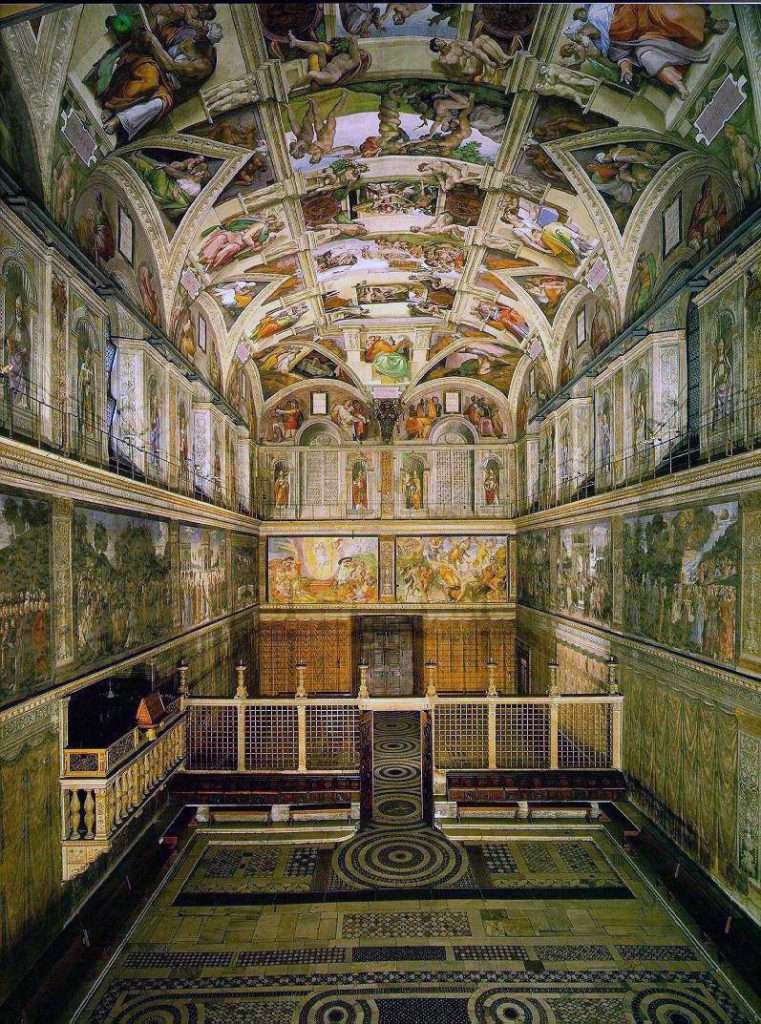
1. The Sistine Chapel
Michelangelo’s work on the Sistine Chapel ceiling is considered one of the greatest artistic achievements in Western history.
Commissioned by Pope Julius II and completed between 1508 and 1512, the ceiling covers over 5,000 square feet and contains more than 300 figures.
Michelangelo painted nine central panels depicting scenes from the Book of Genesis, including the iconic Creation of Adam, where God extends his hand to bring life to the first man.
The ceiling is divided into different sections, with prophets, sibyls, and other biblical figures framing the central narrative.
One of the most remarkable aspects of the Sistine Chapel ceiling is Michelangelo’s ability to convey complex theological ideas through physical forms.
His figures are muscular, dynamic, and imbued with deep emotion, reflecting his sculptor’s eye for the human body.
The Sistine Chapel is one of the most important masterpieces in the Vatican Museum, and to visit it, you have to make all your way through the museum, it is the last room to be visited, so be prepared as the corridors are usually packed with people going exactly where you are going, so you basically just have to follow the flow.
Once you get there, it is hard not to be mesmerized by this fascinating work, you cannot take pictures inside the room, but you can definitely spend a good time there just looking at all the details and absorbing a bit of the artistic aura that this Chapel offers.
🗿 Where to see: Vatican Museums, Vatican City.
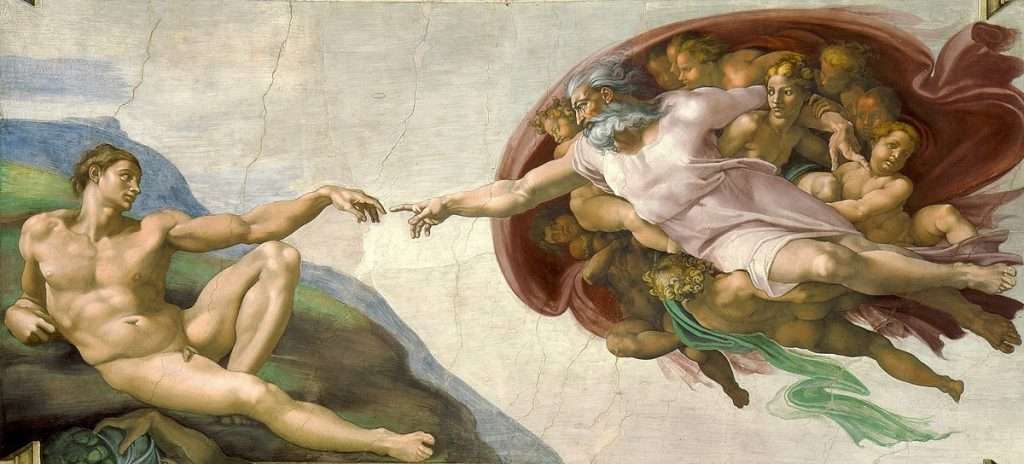
2. Creation of Adam
Michelangelo painted the “Creation of Adam” between 1508 and 1512 on the ceiling of the Sistine Chapel in Vatican City. The artwork was commissioned by Pope Julius II as part of a larger project to adorn the chapel’s ceiling with frescoes depicting various scenes from the Bible.
The “Creation of Adam” is one of the most iconic and significant parts of this masterpiece. It portrays the moment from the Book of Genesis when God, depicted as a powerful figure enveloped in swirling fabric, reaches out to bestow life upon Adam, the first man. Their fingers nearly touching symbolize the imparting of life and intellect from the divine to humanity.
Michelangelo’s portrayal of the human form, the emotive power of the scene, and the dynamic composition all contribute to its enduring significance in the world of art and spirituality. The “Creation of Adam” stands as a testament to Michelangelo’s genius and remains a timeless symbol of the relationship between humanity and divinity.
🗿 Where to see: Sistine Chapel at Vatican Museums, Vatican City.

3. The Last Judgement
Michelangelo painted “The Last Judgment” approximately 20 years after he completed the Sistine Chapel ceiling. This monumental fresco covers the altar wall of the Sistine Chapel.
Commissioned by Pope Clement VII, and later finished under Pope Paul III, the artwork illustrates the Second Coming of Christ and the final judgment of souls. It depicts Christ as the central figure, surrounded by saints, angels, and the blessed ascending to heaven while the damned are consigned to hell.
Michelangelo’s mastery in depicting the human form, his dramatic use of color and movement, and the emotional intensity of the scene make it a significant work of art. It sparked controversy due to its depiction of nude figures in a religious context, contributing to debates about the role of art in conveying spiritual narratives.
🗿 Where to see: Sistine Chapel at Vatican Museums, Vatican City.

4. Dono Tondi
Michelangelo’s “Doni Tondo,” also known as the “Holy Family,” was created around 1503-1504. It’s a circular painting commissioned by Agnolo Doni, a wealthy Florentine merchant, to celebrate his marriage to Maddalena Strozzi.
The significance of the “Doni Tondo” lies in its innovative composition and the portrayal of the Holy Family—Joseph, Mary, and the infant Christ—in a unique circular format.
This format was unconventional for religious paintings at the time. Michelangelo’s artistic skill is evident in the harmonious depiction of the figures, their interactions, and the emotional intimacy conveyed within a circular frame.
The “Doni Tondo” remains an important piece in the development of Renaissance art, reflecting the era’s focus on the revival of classical forms and the exploration of new artistic techniques and compositions.
🗿 Where to see: Uffizi Gallery, Florence.
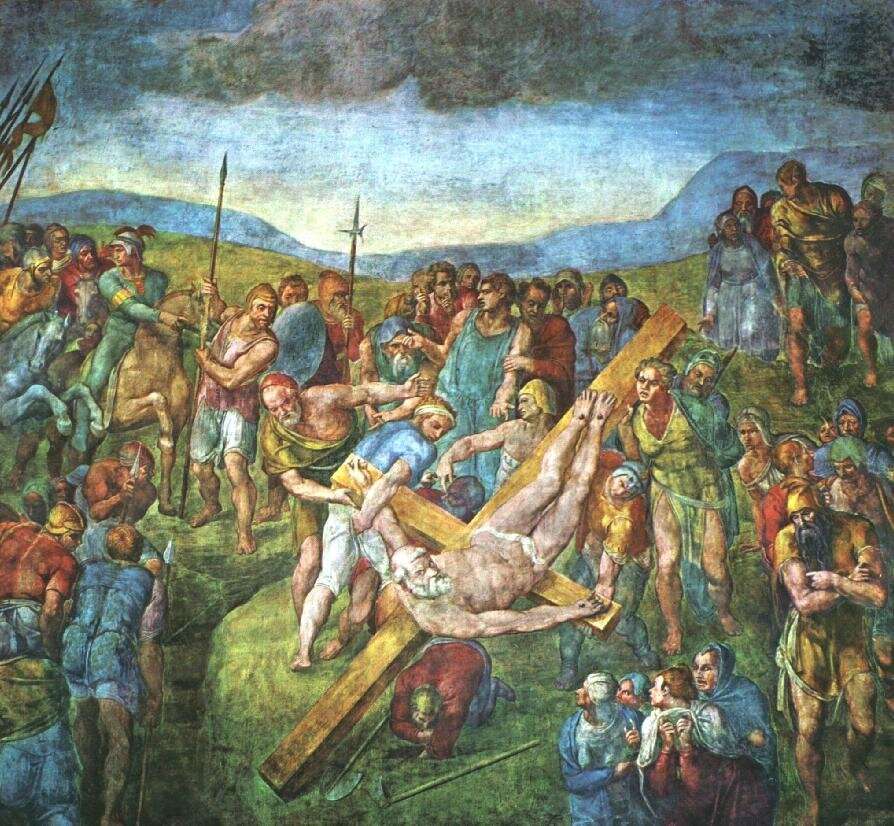
5. The Crucifixion of St Peter
The last fresco was made by Michelangelo. It can be seen, alongside The Conversion of Saul, another fresco painted by Michelangelo, in the Cappella Paolina, a chapel in the Vatican City. T
The chapel is located close to the Sistine Chapel, however, it is rarely included in any itinerary.
The painting depicts St Peter in the moment of his crucifixion, the crowd looks disturbed around the soldiers who are erecting the Saint.
This is definitely not one of the most acclaimed artworks of Michelangelo, some attribute its weird proportions to his advanced age, but others believe it was just Michelangelo’s pursuit of mannerism style.
🗿 Where to see: Cappella Paolina, Vatican Palace, Vatican City.
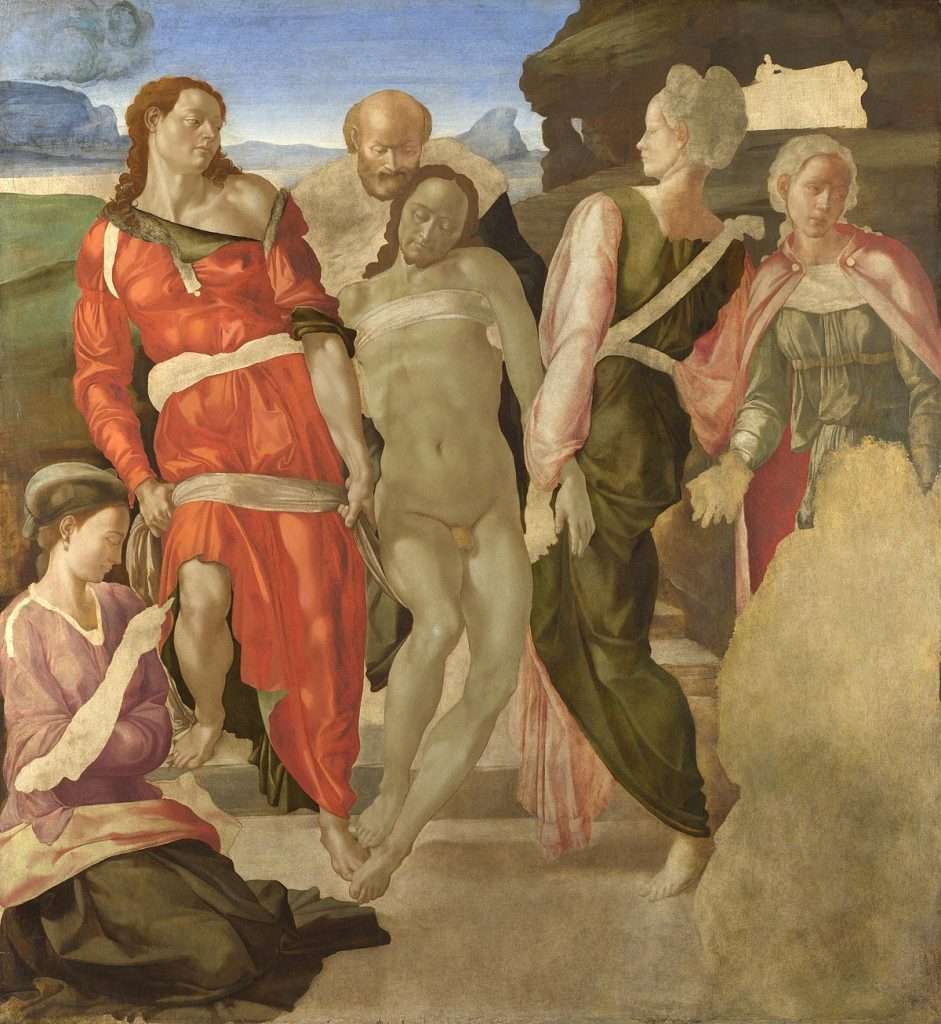
6. The Entombment
The Entombment is an unfinished painting that dates back to around 1500-1501.
The piece depicts the somber moment when Christ’s body is being lowered into the tomb after the crucifixion.
Although incomplete, the painting reveals Michelangelo’s characteristic attention to muscular detail and emotional intensity.
The figures surrounding Christ display a range of human emotions, from grief to resignation.
Some art historians believe the artist may have abandoned the work due to a new commission or dissatisfaction with the composition.
🗿 Where to see: National Gallery, London.
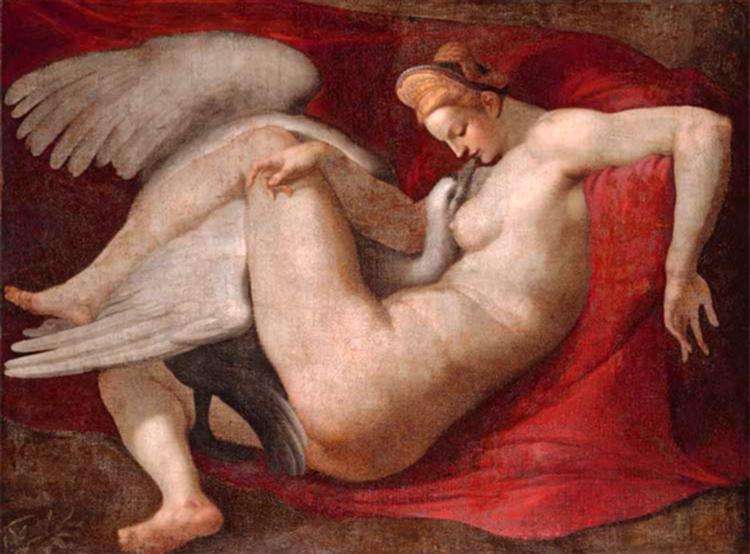
7. Leda and the Swan
Michelangelo’s Leda and the Swan is a lost painting that depicts the mythological story of Leda, the queen of Sparta, and her encounter with Zeus, who had transformed into a swan.
Although the original painting is lost, several copies and sketches based on Michelangelo’s work survive.
The artwork was commissioned by Alfonso I d’Este, Duke of Ferrara, in the early 16th century.
It’s believed that Michelangelo completed the cartoon, a large preparatory drawing, but the painting itself was destroyed or lost during the 16th or 17th century.
🗿 Where to see: The original one was destroyed, but a copy can be seen at the National Gallery, London.




